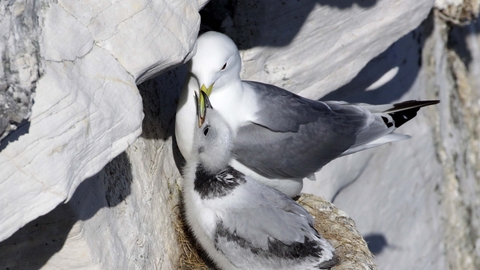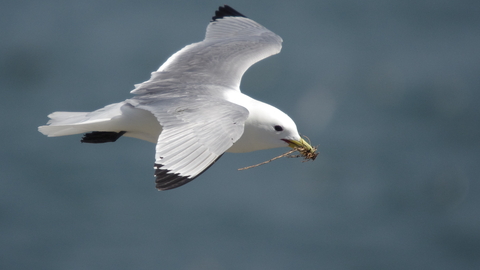
Kittiwake ©Margaret Holland

Kittiwake ©James Rogerson
Kittiwake
Enw gwyddonol: Rissa tridactyla
A pretty, little gull, the kittiwake can be spotted nesting in colonies on clifftops and rock ledges around the UK's coast. It spends the winter out at sea.
Species information
Category
Ystadegau
Length: 38-40cmWingspan: 95-110cm
Weight: 300-500g
Average lifespan: 12 years
Statws cadwraethol
Classified in the UK as Red under the Birds of Conservation Concern 5: the Red List for Birds (2021).
